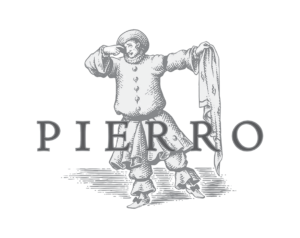Maurice Ravel
(1875-1937)
Piano Concerto in G
Allegramente
Adagio assai
Presto
It is scarcely surprising that Ravel wrote two of the greatest piano concertos of the 20th century. He was, after all, a concert pianist himself, as well as a composer of the highest calibre for piano, and arguably the greatest orchestrator of his generation. What was unexpected, however, was that he took so long to get around to the task, writing the Piano Concerto for the Left Hand and the Piano Concerto in G simultaneously only towards the end of his career.
During the 1920s, Ravel became a frequenter of Paris’ late-night jazz clubs, and that influence is most apparent in the G major concerto. The idea for the opening theme came to him in 1927 as he was travelling by train to London from Oxford. He then lifted themes from an earlier, aborted Basque Rhapsody he had intended for piano and orchestra, and reworked them into a more distinctively modern idiom. Perhaps the biggest impetus of all came in 1928 when, while on a concert tour in America, he met George Gershwin and heard his Rhapsody in Blue, whose influence is most obvious in the middle of the first movement.
Ravel originally intended to perform the solo part of the concerto himself, but in the end his ailing health prevented him from doing so. Instead, the concerto was premiered by Marguerite Long at the Salle Pleyel in 1932, with the composer conducting. (The left-hand concerto had always been intended for Paul Wittgenstein.)
For all its jazziness, Ravel thought of this as a ‘classical’ concerto. As he wrote when he still thought of himself as the soloist:
"Planning the two concertos simultaneously was an interesting experience. The one in which I shall appear as the interpreter is a concerto in the true sense of the word: I mean that it is written very much in the same spirit as those of Mozart and Saint-Saëns. The music of a concerto should, in my opinion, be lighthearted and brilliant, and not aim at profundity or dramatic effects."
Indeed Ravel considered calling it a ‘Divertissement’, so keen was he to keep the concerto from self-indulgent solemnity. In any case, it became a true concerto in which fun, self-parody, and exquisite beauty all play their part; but there is a ‘brittleness’ in the concerto’s high spirits, not to mention a pervasive and ‘in-spite-of-itself’ sadness to the slow movement.
The work begins with the crack-of-a-whip and it barely stops racing during the entirety of its first movement. Scored with virtuosic dexterity and lightness, the jazzy rhythm drives on through spiky arpeggios in the piano, a piccolo solo, tremolos and pizzicati in the strings and a trumpet solo. Even the harp takes the spotlight. Despite the wealth of invention, the sense of purpose never falters, and before breath can be drawn, the movement hurtles to its abrupt conclusion.
The Adagio – one of Ravel’s most sublime achievements – was modelled on the equivalent movement in Mozart’s Clarinet Quintet. Writing painstakingly, two bars at a time, Ravel agonised over this movement for many months, confessing later that it ‘almost killed him’. Its prevailing mood is that of a nocturne and the piano’s achingly beautiful main theme seems almost hesitant, yet somehow inexorable and assured. After the main theme is completed, the middle section becomes more agitated and tonally ambiguous. Following some strident, stifling chords, the main melody is ‘released’ in the woodwinds with the piano weaving arabesques and delicate arpeggios around it. Finally, amidst trills on the piano, this most astonishing of slow movements draws to a close. (Interestingly, on the recording which Ravel made with Marguerite Long not long after the 1932 premiere, he conducts the slow movement at a considerably faster tempo than that indicated in the score!)
Ravel told Long that he was going to end the concerto on those piano trills, but in fact he added a finale in which the frenetic pace of the opening movement is exceeded. Supposedly a rondo (although at this pace it’s not easy to tell), it is filled with jazz sounds and dazzling piano effects. In the wink of an eye it presents percussive flourishes, trombone glissandi and brief snatches of big band imitations from brass and woodwind, before racing on to its sudden but emphatic end.
Abridged from a note by Martin Buzacott
Symphony Australia © 1997
First Performance:
14 January 1932, Paris. Marguerite Long, piano. Composer conducting.
Most Recent WASO performance:
5-7 July 2012. Cédric Tiberghien, piano. Tadaaki Otaka, conductor.
Instrumentation:
two flutes (2nd also piccolo), two oboes (2nd also English horn), piccolo clarinet, clarinet, two bassoons; two horns, trumpet, trombone, timpani, triangle, snare drum, cymbals, bass drum, tamtam, wood block, whip, harp and strings.



























































